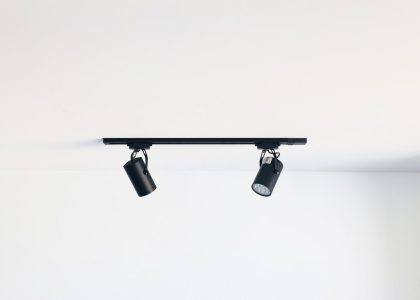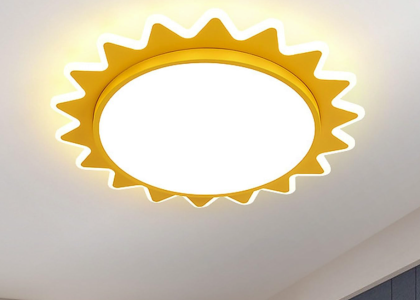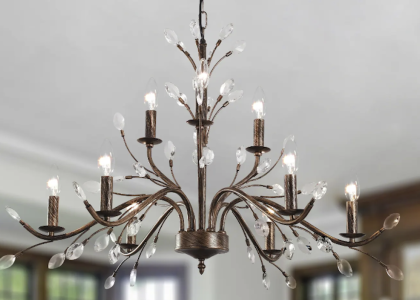Lighting Cintata plays a crucial role in the workplace, impacting employee health, well-being, and productivity. A well-lit workspace not only enhances visibility but also creates a comfortable and inviting environment. In recent years, there has been a growing recognition of the importance of good lighting in the workplace, leading to the development of sophisticated office lighting solutions. These advanced lighting systems offer numerous benefits, including improved employee performance and satisfaction. In this article, we will explore the importance of good lighting in the workplace, the benefits of sophisticated office lighting solutions, how to choose the right lighting for your workspace, and the latest trends in office lighting design.
The importance of good lighting in the workplace
Good lighting in the workplace is essential for several reasons. Firstly, it has a significant impact on employee health and well-being. Insufficient or poor-quality lighting can lead to eye strain, headaches, and fatigue. On the other hand, adequate lighting can reduce these issues and promote a healthier work environment. Additionally, good lighting can enhance mood and overall job satisfaction. Brighter and more natural light has been shown to improve mood and increase energy levels, leading to higher productivity.
The benefits of sophisticated office lighting solutions
Sophisticated office lighting solutions offer numerous advantages over traditional lighting systems. One of the key benefits is improved employee performance and satisfaction. Advanced lighting systems can be customized to meet individual needs and preferences, allowing employees to work in an environment that suits them best. These systems also offer flexibility in terms of brightness and color temperature, enabling employees to adjust the lighting according to their tasks or personal preferences.
Another advantage of sophisticated office lighting solutions is energy efficiency. These systems use LED technology, which consumes significantly less energy compared to traditional incandescent or fluorescent lights. This not only reduces energy costs but also contributes to environmental sustainability by reducing carbon emissions.
Choosing the right lighting for your workspace
When choosing lighting for your workspace, it is important to consider the specific needs of your employees and the tasks they perform. There are several types of lighting available for the workplace, including ambient lighting, task lighting, and accent lighting.
Ambient lighting provides overall illumination and should be evenly distributed throughout the workspace. It should be bright enough to ensure visibility but not too harsh or glaring. Task lighting, on the other hand, is focused on specific work areas and should provide sufficient brightness for the task at hand. Accent lighting is used to highlight specific areas or objects in the workspace, such as artwork or architectural features.
The impact of lighting on productivity and mood
Research has shown that lighting has a significant impact on employee productivity and mood. Brighter and more natural light has been found to increase alertness, improve mood, and enhance cognitive performance. On the other hand, dim or poor-quality lighting can lead to decreased productivity, fatigue, and negative mood states.
To optimize lighting for productivity and mood, it is important to consider factors such as color temperature and light intensity. Cool white light with a higher color temperature (around 5000K) is generally recommended for tasks that require focus and concentration, while warm white light with a lower color temperature (around 3000K) is more suitable for relaxation and creating a cozy atmosphere.
The role of lighting in creating a comfortable and inviting workspace

Lighting plays a crucial role in creating a comfortable and inviting workspace. It can contribute to the overall ambiance of the office and make employees feel more at ease. Soft, warm lighting can create a cozy atmosphere, while brighter lighting can make the space feel more energetic and vibrant.
In addition to brightness and color temperature, the placement of lights also plays a role in creating a comfortable workspace. Lighting should be evenly distributed throughout the office to avoid glare or shadows. It is also important to consider the use of natural light, as it can have a positive impact on employee well-being.
The latest trends in office lighting design
In recent years, there have been several trends in office lighting design aimed at improving the workplace environment. One of these trends is the use of circadian lighting, which mimics the natural changes in light throughout the day. This type of lighting can help regulate employees’ sleep-wake cycles and improve their overall well-being.
Another trend is the integration of smart lighting systems, which allow for greater control and customization. These systems can be programmed to adjust lighting levels and color temperature based on time of day or specific tasks. They can also be controlled remotely through mobile apps, providing convenience and flexibility.
The advantages of energy-efficient lighting solutions
Energy-efficient lighting solutions offer several advantages for the workplace. Firstly, they can significantly reduce energy costs. LED lights, which are commonly used in energy-efficient lighting systems, consume up to 80% less energy compared to traditional incandescent or fluorescent lights. This can result in substantial savings on electricity bills.
In addition to cost savings, energy-efficient lighting solutions also have a positive environmental impact. By reducing energy consumption, these systems help to lower carbon emissions and contribute to sustainability efforts. They also have a longer lifespan compared to traditional lights, reducing the need for frequent replacements and further reducing waste.
How to create a personalized lighting plan for your office
Creating a personalized lighting plan for your office involves considering several factors. Firstly, you need to assess the specific needs of your employees and the tasks they perform. This will help determine the type of lighting required in different areas of the workspace.
You should also consider the layout and design of your office space. Different areas may require different types of lighting, such as task lighting for workstations and ambient lighting for common areas. It is important to ensure that lighting is evenly distributed throughout the office to avoid glare or shadows.
The benefits of natural light in the workplace
Natural light has numerous benefits for the workplace. Exposure to natural light has been shown to improve mood, increase productivity, and enhance overall well-being. It can also help regulate employees’ sleep-wake cycles, leading to better sleep quality and increased alertness during the day.
To optimize natural light in the workplace, it is important to maximize the use of windows and skylights. This can be achieved by positioning workstations near windows or using glass partitions to allow natural light to penetrate deeper into the office space. It is also important to consider the use of window treatments, such as blinds or shades, to control glare and prevent overheating.
Tips for maintaining and upgrading your office lighting system
To ensure that your office lighting system remains effective over time, regular maintenance is essential. This includes cleaning light fixtures and replacing bulbs as needed. It is also important to periodically assess the performance of your lighting system and make any necessary upgrades or adjustments.
When upgrading your office lighting system, consider investing in energy-efficient solutions such as LED lights. These lights have a longer lifespan and consume less energy compared to traditional lights. They may require a higher upfront cost but can result in significant long-term savings.
Good lighting in the workplace is crucial for employee health, well-being, and productivity. Sophisticated office lighting solutions offer numerous benefits, including improved performance and satisfaction. When choosing lighting for your workspace, consider factors such as brightness, color temperature, and type of lighting. It is also important to consider the latest trends in office lighting design and the advantages of energy-efficient solutions. By creating a personalized lighting plan and optimizing natural light, you can create a comfortable and inviting workspace that promotes employee well-being and productivity.












